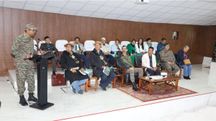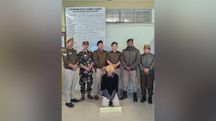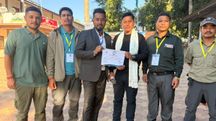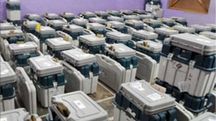Arunachal slashes healthcare human resource shortfall from 33 per cent to 6 per cent in 2.5 years
The government has met the IPHS (Indian Public Health Standards) requirements for General Duty Medical Officers, with the sole shortfall in specialist positions.
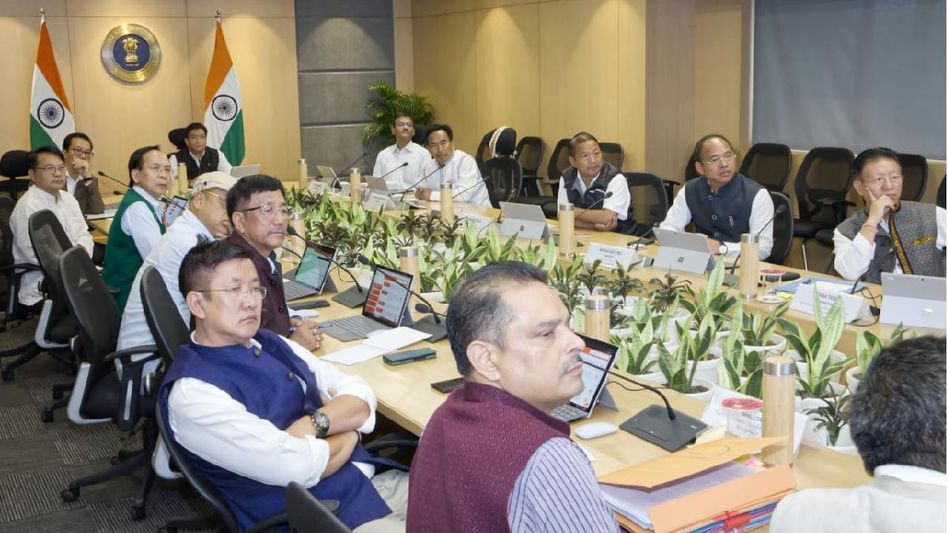 Arunachal slashes healthcare human resource shortfall from 33 per cent to 6 per cent in 2.5 years
Arunachal slashes healthcare human resource shortfall from 33 per cent to 6 per cent in 2.5 yearsThe Government of Arunachal Pradesh has greenlit an array of transformative measures aimed at enhancing healthcare accessibility and delivery across the state. In the past 7 years massive health infrastructure upgradation drive has been taken up in the State. Recognizing the distinct challenges posed by Arunachal Pradesh's formidable geography, vast expanses, and low population density, the government has persistently bridged the human resources gap. This concerted effort has resulted in an impressive reduction of the human resources deficit from 33 per cent to a mere 6 per cent in the past two and a half years. The government has met the IPHS (Indian Public Health Standards) requirements for General Duty Medical Officers, with the sole shortfall in specialist positions.
The cornerstone of this transformation lies in the robust upgrade of district hospitals, fortified community health centers, primary health centers, sub-centers, and health and wellness facilities. Striving for excellence in maternal and child care, institutional delivery points, critical and emergency care, cancer care, and renal care, the state administration underscores its dedication to holistic health improvement.
With a multifaceted approach encompassing prevention, curative, and rehabilitative care services, the state cabinet endorsed the proposals set forth by the Department of Health & Family Welfare. Emphasizing the importance of addressing contemporary and emerging public health needs, the cabinet sanctioned the establishment of a Public Health Nursing Cadre. This novel initiative involves the creation of 450 positions within Groups C, B, and A, aimed at fortifying nursing services across the state.
Public Health Nursing is set to play a pivotal role in disease prevention, covering a spectrum of services at various levels of care delivery. With outreach programs and patient guidance, the cadre aims to mitigate disease outbreaks and promote healthier lifestyles, contributing to comprehensive primary health coverage.
Furthermore, in response to escalating demands on secondary healthcare due to increasing footfall in public health facilities, the cabinet approved the inception of a Hospital Nursing Cadre. Comprising Group B non-gazetted, Group B gazetted, and Group A posts, this strategic move aligns with ongoing hospital infrastructure enhancements and broader health sector reforms. The creation of these posts is set to fortify curative care, catering to both definitive and emergency medical needs.
In parallel with the healthcare human resource surge, nursing schools and colleges have sprouted across the state, necessitating additional faculty positions. In acknowledgment of this need, the cabinet nodded in favor of the creation of Associate Professors and Assistant Professors in the nursing discipline, aiming to meet Indian Nursing Council norms and elevate the quality of nursing education.
Beyond nursing, the government affirms its dedication to holistic diagnostic services. Modern laboratories, diagnostic equipment, and medical facilities have been established, with the Free Diagnostic Initiative extending these services to grassroots levels. Recognizing the importance of skilled human resources for maintaining these services, the cabinet endorsed the creation of additional Laboratory Technician posts.
In a landmark stride for medical education, TRIHMS, the solitary medical college in the state, celebrated its inaugural batch of MBBS graduates. With plans to expand the intake from 50 to 110 students, and recent introductions such as the Cardiac Cath Lab, the college signifies a beacon of medical education. To meet growing human resource needs, the cabinet sanctioned ancillary posts, including nursing officers, for TRIHMS.
Other essential healthcare positions were also addressed, including Lady Health Visitors and Health Assistants, streamlining recruitment rules and career progression for these pivotal roles.
Copyright©2025 Living Media India Limited. For reprint rights: Syndications Today

